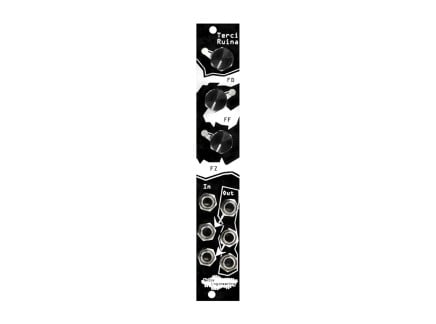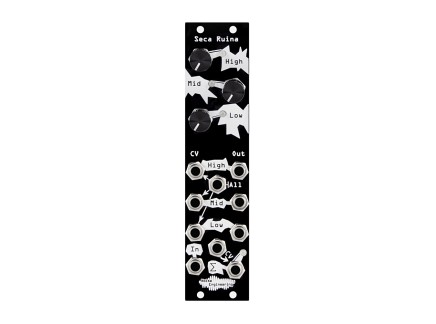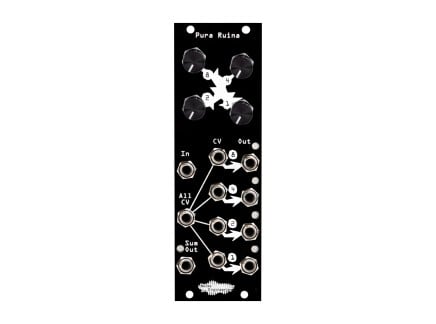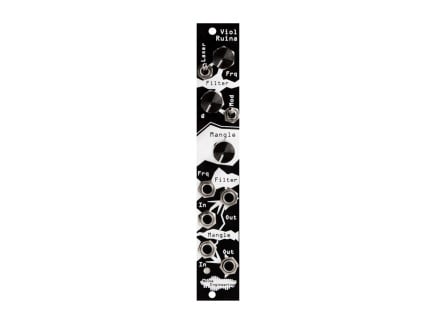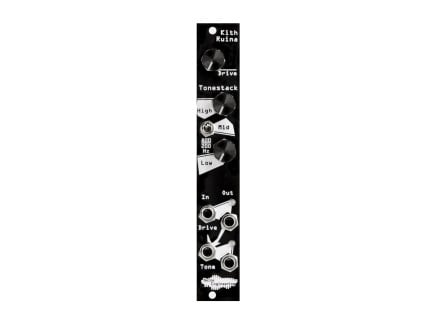Noise Engineering visited our shop this Halloween to talk distortion—and given their track record this year, distortion is something that they know well. In this demo, they give a quick run-down of all five Ruina distortion modules they've released in 2019, making for a full evening of sonic debauchery and timbral destruction. Also, Noise Engineering showed up in costume as an ADSR envelope!
The evening was wrapped up with performances by A Million Machines, Trovarsi, and Matt Lange—demonstrating as always just how diverse the sound of a modular system can be, and how much sonic range even the most cruel of distortions can provide.
The Ruina Family Tree
Terci Ruina provides three analog distortion circuits in only 4hp. By normalling them to one another's outputs but still providing access to the individual outs, it offers a ton of ways to turn even the cleanest of sounds into gross, lurching masses of crunchy chaos. Offering a transistor/diode-based FB (feedback) circuit, an op-amp based FF (feedforward) saturation, and the two-stage bipolar FZ (fuzz), Terci Ruina is one of the most outright intense of the Ruina family.
Kith Ruina is a classic distortion effect based on the idea of a guitar tonestack: a drive section with a three-band EQ immediately following. It provides individual inputs for both the Drive and Tonestack sections, but (as with the Terci Ruina) also normals them together, providing a great way to obliterate your sound and sculpt it in the same module.
The Viol Ruina is a resonant lowpass filter and distortion aimed toward absolute grossness. It provides basic filter controls such as cutoff and resonance—creating brutal, grinding resonances even without modulation applied. But the other half of Viol Ruina's special magic is its internal modulation capabilities: it has an integrated envelope follower that can be routed to the filter cutoff, as well as the possibility to modulate cutoff from the module's own output...creating tearing, aggressive tones somewhere between the character of insane FM and a Tesla coil. Add the Mangle circuit for distortion and a truly incredible filter is born.
Seca Ruina is a multiband distortion + VCA—somewhat like a three-band EQ with a taste for chaos. Audio is divided into low, mid, and high bands, each with their own level control, CV control, and individual outputs. Their sum is available at the final mix output, equipped with its own VCA. This enables use as an end-of-voice-chain effect, as a dynamic, EQ'd and distorted effect send...or in countless other applications! And since each band offers its own CV input, you can create continuously morphing sonic textures, like a dynamic, voltage-controllable EQ.
Last in the series is the brand-new Pura Ruina...a three-stage full-wave rectifier-based distortion (wow that's a lot of hyphens). By ganging together several stages of rectification and providing each with its own outputs, level controls, and CV controls, it turns a very basic effect (rectification) into something completely unfamiliar: a peculiar distortion that continuously morphs in character between brittle, high-end fuzz to the sounds of cell phone interference and grinding, crushing low end.
Masters of noise and sonic destruction, Noise Engineering has proven that "distortion" can be much more than a one-dimensional effect: with clever thought and the opportunity for dynamic control, it can turn even very familiar sounds into something completely new and unexplored.

